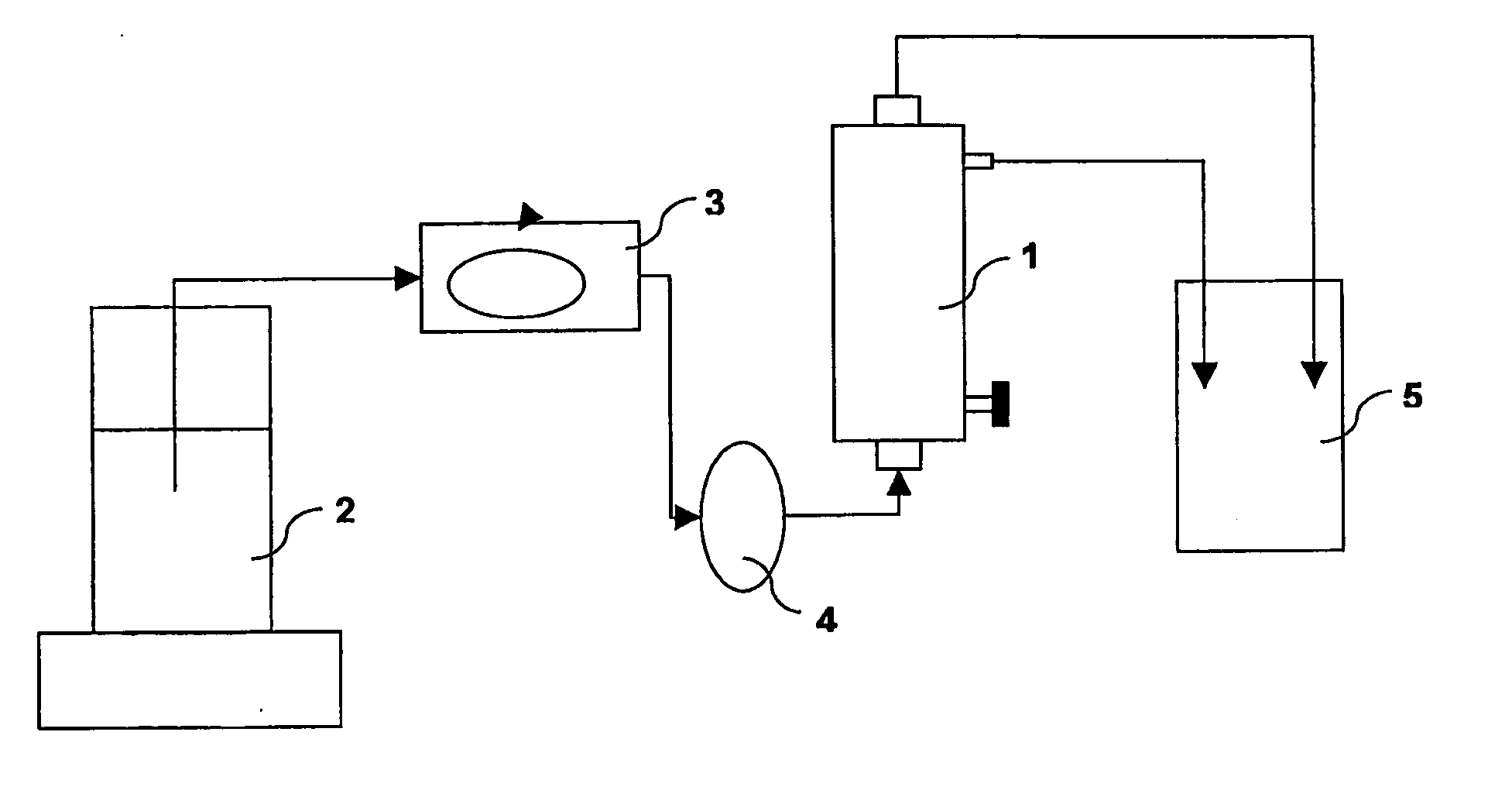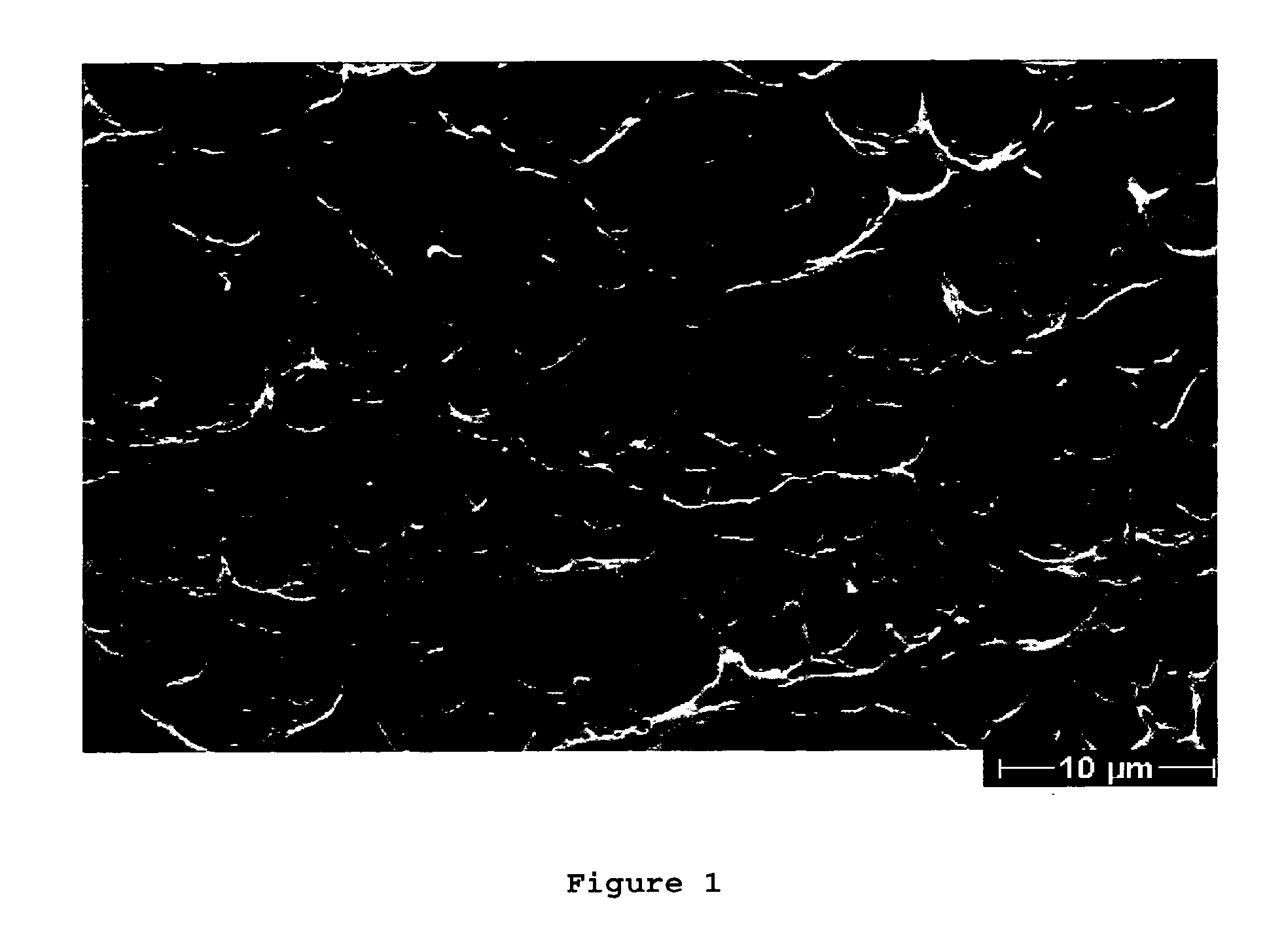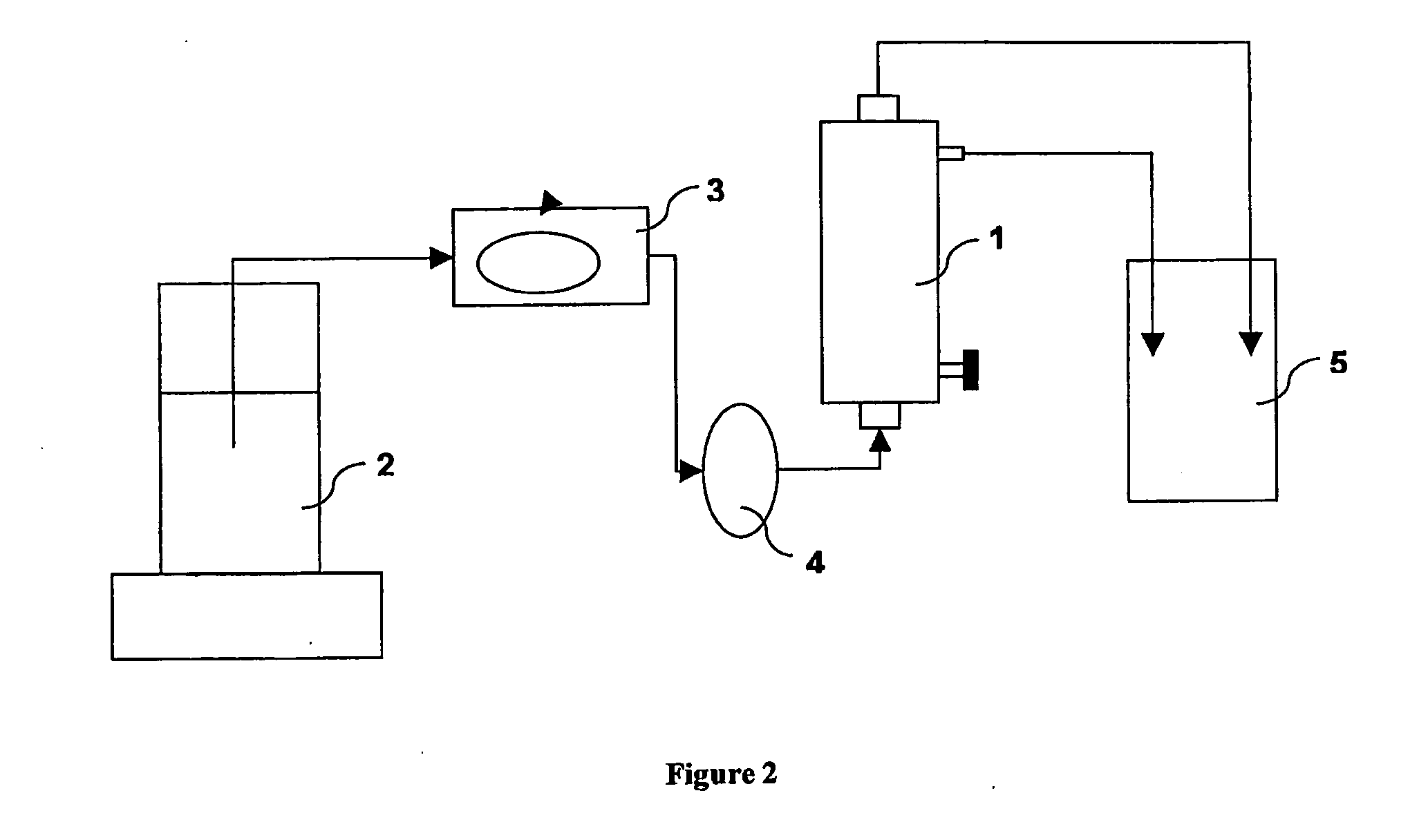Hydrophilic membranes with a non-ionic surfactant
a technology of hydrophilic membrane and surfactant, applied in the field of hydrophilic membrane, can solve the problems of high tendency to adsorb blood components, low filtration property, impurities of cells or cell debris, etc., and achieve the effect of reducing interaction with blood components and high blood compatibility
- Summary
- Abstract
- Description
- Claims
- Application Information
AI Technical Summary
Benefits of technology
Problems solved by technology
Method used
Image
Examples
example 1
Preparation of a Hydrophilic Micro Porous Membrane
[0094](A) A polymer solution was prepared by dissolving 18.0 wt-% polyethersulfone (PES; BASF Ultrason 6020), 3.25 wt-% low molecular weight polyvinylpyrrolidone (PVP; BASF K30) and 8.0 wt-% high molecular weight polyvinylpyrrolidone (PVP; BASF K85 or 1(90) and 6.0 wt-% water in 70.75 wt-% N-methylpyrrolidone (NMP). The viscosity of the polymer solution at room temperature was 61810 mPa×s. To prepare the solution, NMP and the water were placed in a three neck-flask with finger-paddle agitator in the centre neck. Then, the PVP was added to the NMP and stirred at 50° C. until a homogeneous clear solution was formed. Finally, the polyethersulfone (PES) was added. The mixture was stirred at 50° C. until a clear high viscous solution is obtained. The warm solution was cooled down to 20° C. and degassed. To fully degas the solution the highly viscous polymer solution was transferred into a stable stainless steel container, the container wa...
example 2
[0096]Treatment of a Hydrophilic Membrane with Polysorbate 20
[0097]A 1 wt.-% Polysorbate 20 solution is prepared by adding Polysorbate 20 to demineralised and degassed water. The mixture is stirred on a magnetic stirrer for 15 minutes. A small fraction of the resulting solution is taken for analysing the exact concentration of Polysorbate by RP-HPLC. A filter device comprising a hydrophilic micro porous hollow fiber membrane bundle prepared according to Example 1 is installed within a set-up according to FIG. 2 and filled on the blood and dialysate side with a total of 290 g of the Polysorbate 20 solution. The filling is done in a way to avoid or remove air from the device. After 30 minutes the Polysorbate 20 solution is removed from the filter and reinserted again into the system as before. Any excess solution is stored for further analysis. After 30 minutes the solution is again removed and stored for further analysis. When the solution is removed, care is taken to drain the filte...
example 3
Quantitative Analysis of Polysorbate 20 in Aqueous Solutions
[0098]The method for quantitatively determining the amount of e.g. Polysorbate 20 in an aqueous solution is based on the acidic hydrolysis of the sorbitan laurate ester, followed by measuring the amount of the laurine acid (n-dodecane acid) by RP-HPLC. Details of quantitative determination of polysorbate 20 are provided by Oszi and Petho, 1998: Quantitative determination of polysorbate 20 in nasal pharmaceutical preparations by high-performance liquid chromatography. J. Pharm. Biomed. Anal. 18, 715-720.
[0099]A probe of 1 ml of a Polysorbate 20 solution is admixed with 1 ml 4M H2SO4. After approximately 24 hours the reaction is stopped by adding 4 ml acetonitrile. The resulting solution can be directly submitted to the RP-HPLC. The mobile phase is a 20 mM phosphate buffer in Millipore-Q-Water. pH is adjusted to 2.8 with dilute phosphoric acid. 250 ml of the buffer solution are admixed with 750 ml ACN. The flow is 1.1 ml / min....
PUM
| Property | Measurement | Unit |
|---|---|---|
| Temperature | aaaaa | aaaaa |
| Temperature | aaaaa | aaaaa |
| Fraction | aaaaa | aaaaa |
Abstract
Description
Claims
Application Information
 Login to view more
Login to view more - R&D Engineer
- R&D Manager
- IP Professional
- Industry Leading Data Capabilities
- Powerful AI technology
- Patent DNA Extraction
Browse by: Latest US Patents, China's latest patents, Technical Efficacy Thesaurus, Application Domain, Technology Topic.
© 2024 PatSnap. All rights reserved.Legal|Privacy policy|Modern Slavery Act Transparency Statement|Sitemap



